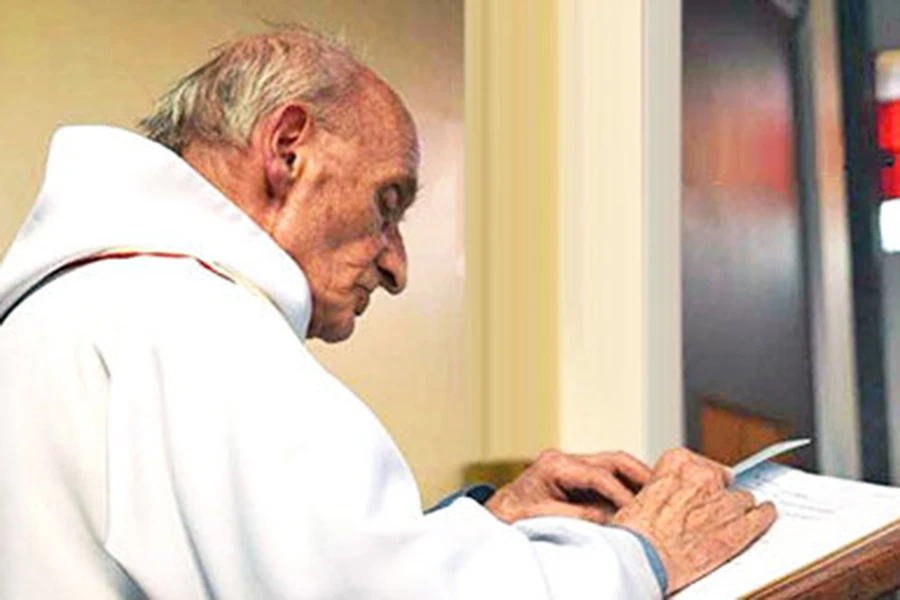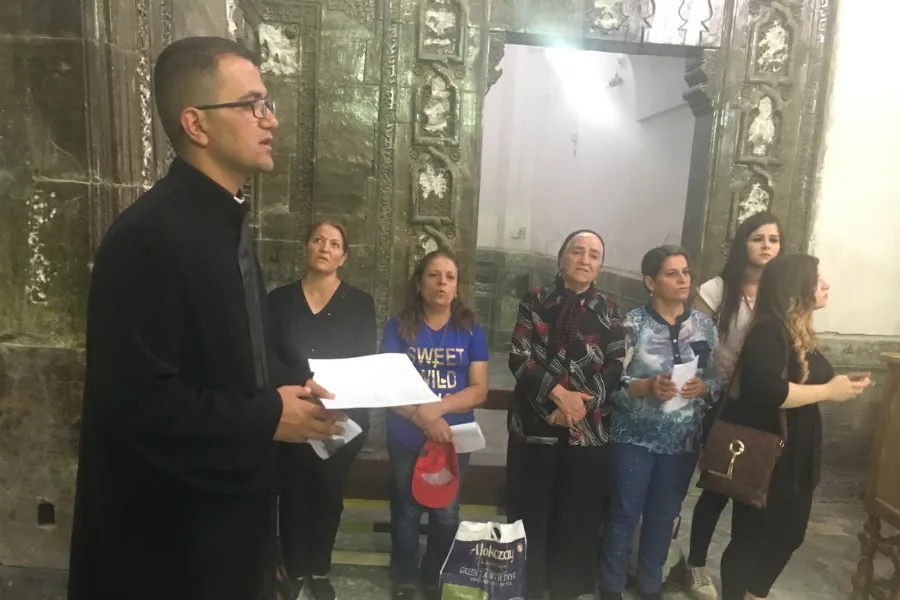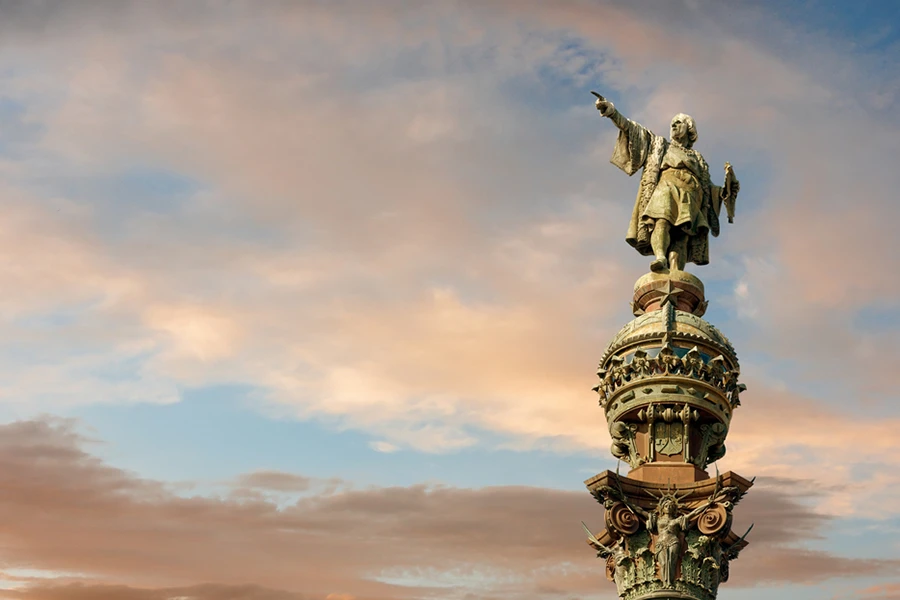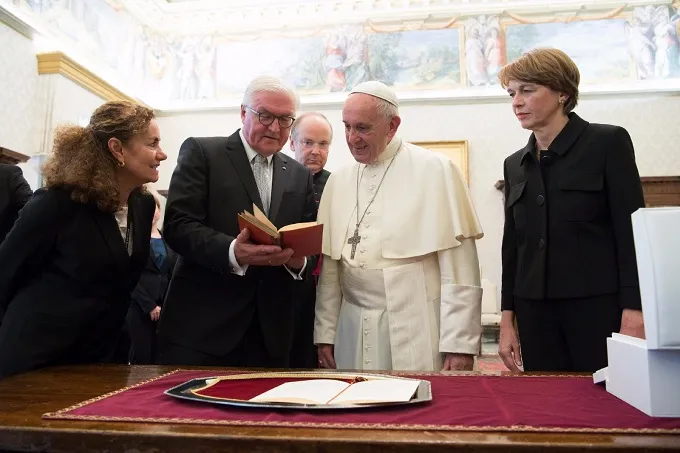
Rome, Italy, Oct 9, 2017 / 12:06 pm (CNA/EWTN News).- At the close of a Rome conference on child protection online, a leading expert in the field said that while the statistics are well-known, he was surprised by the lack of awareness about the problem.
He added that all sectors of society need to take a more pro-active approach to the difficulty.
“If you study this field and if you work in it, you know about the numbers. I am more amazed about the lack of realization in many people about the scale of the problem about which we speak,” Fr. Hans Zollner SJ told CNA Oct. 7.
President of the Pontifical Gregorian University’s Center of Child Protection (CCP) and a member of Pope Francis’ commission for the protection of minors, spoke to CNA at the close of a four-day conference on “Child Dignity in the Digital World.”
Organized by the CCP in collaboration with the UK-based global alliance WePROTECT and the organization “Telefono Azzurro,” which is the first Italian helpline for children at risk, the conference took place Oct. 3-6 in Rome and was the first of its kind on a global scale addressing the issue of online safety.
Vatican Secretary of State Cardinal Pietro Parolin opened the conference on day one, and other participants include social scientists, civic leaders, and religious representatives. Discussion points include prevention of abuse, pornography, the responsibility of internet providers and the media, and ethical governance.
In his comments to CNA, Zollner noted that the European Union currently has a campaign called “One in Five,” referring to the fact that one in five young people in Europe has, at some point, been sexually abused.
“If you realize, if you think a little bit, I’m shocked, so I don’t know why the existential and the psychological harm that is done does not really translate into concrete political action to counteract this,” he said.
“(It’s) for me one of the mysteries that I can’t explain” other than perhaps “it’s too big, it’s too shocking, so you put it away because nobody can deal with it,” he said. “So we need to start dealing with it step by step, and bringing down the numbers of those who have been harmed.”
Zollner also touched on what he believes were the main takeaways of the conference, the role of both the Church and society at large in safeguarding from online exploitation, and action points for the future, which he said need to have a more “preventative approach.”
Please read below for CNA’s interview with Fr. Zollner, edited for length and clarity:
What, for you, are some of your impressions after the conference? How do you think it went? What are some of the highlights?
I’m really amazed and I’m very happy because this conference was the first of its kind in bringing people together of different areas, of different levels of responsibility in society, in business, on the internet, social media corporations, different religion and so forth. So it was the first of its kind and it went very well, I heard it from I believe every single person who participated, because it was not sectoral. On other occasions we would have only the business people, and here the government people and here the scientists. They were really together and they were discussing, so the format worked really well, where in the morning we would have sessions with top experts who have done research for many, many years and decades. And in the afternoon we would have all these people in mixed groups, meaning from different countries, languages, professions and so forth, to get together and they spoke to each other and challenged each other, and they came up with very interesting ideas, reflections and proposals.
There were outstanding experts in the research in what do we talk about, what is online sexual abuse of minors, what is the impact on the brains, the relational developmental and emotional side of young people when they watch pornography or when they themselves are abused as objects of sexual abuse which is then posted and sold on the internet. What can we do to prevent such uploading of material of that kind, and what can we do so that the people who are likely to become offenders don’t do what they do now? Very often in a hidden space where people say, even police say, there are very few means to tackle that.
We’ve heard from Interpol that if you take together all the sex offenders who commit crimes online, we wouldn’t have enough prisons to put them in. So we need to have a preventive strategy so that people don’t commit crimes. And we need to do that by bringing that together lawmakers, law enforcement, companies who have the technological means with the algorithms and photo DNA recognition which is out there already, but it is not applied thoroughly enough and consistently enough, so we really need to work together.
This was our intention, bringing people together so they enrich each other and they enhance what we can do so that young people grow up in a safer world, also a safer online world. The networking has created so many new relationships and there are so many ideas and concrete proposals for follow-up conferences in different parts of the world: Latin America, Asia, Africa. The ripple-effect is there, so we are happy about that.
So you think some of these regional conferences will actually happen before a second global conference?
Sure, sure. We have worked for more than two years to organize this one, so it’s not around the corner, but I have heard that next year there are concrete ideas and they are already talking to each other, people from Asia, people from Africa, people from Latin America, people who would like to have something among religious leaders, an interreligious prevention conference, if you wish. So the faith communities talk to each other and help each other to understand how much they can do in their schools, in their communities, in their institutions whatever they are, to have for example risk-free WiFi access, so we could do much in terms of preventing abuse happening in open space WiFi for example. Unlimited access doesn’t mean there is an unlimited possibility of crime.
In terms of bringing all these people together, you said it was a model that worked. How was the interaction, and do you expect these connections to continue in the future?
Absolutely. All of the feedback that I’ve heard from the working groups was that it was very interesting, interesting for the participants, interesting also because we invited 10 representatives of the ‘digital native’ generations, so young students here from around Rome, and they brought into the discussion the voices of young people and how they perceive what the adults talk about and what those decision makers think is necessary, whether that’s something reasonable for young people, or they don’t see a need, of they think you should invest here. So we have a lot of leads. It will will be the task, in the aftermath of this congress, that we will concentrate on 3-4 lines that we can really follow through. Some of the major foundations that were represented here, big foundations, gave us the prospect that they would actually help us to find funding for some of these projects. On a large scale there are a lot of possibilities.
One needs to be focused, one needs to be on target, but you can do many things at the same time. For example, one could ask advertisement companies to do their job and help young people become more aware of the risks that are connected to access to internet, engaging in chats and the exchange of messages with unknown people. So all this is a wide range of measures and possibilities and people who were here were probably in this moment, I believe there were no better prepared people to talk about this than these ones. They have a lot of passion for the protection of minors, you could feel it in the big hall, in the small groups. It was just a spirit of communion and a spirit of common intention and interest.
You mentioned that there have been offers for specific investments. What would be the areas that you think should be targeted first if you had the funding?
Of course, the scientists and the governments said, the government responsibles who were here, ministers, those who were the independent commissioners in their country, etc, all of them said they need reliable data. And interestingly enough, for example the question of work in prevention has not been researched well enough. So we need to go into depth and breadth, because we’re talking about millions and millions of young people who are at high risk of being abused, and becoming abusers of other young people when they do ‘sexting’ or even ‘sextortion.’
So one area for scientists would be research in different kinds of prevention measures, safeguarding measures, and finding out where are the keys, so that young people don’t become victims. In the same line, but on the other side, so to say, how can we prevent people who are at risk of becoming abusers, adults who have sexual interest, sexual attraction to minors, how can we prevent these people from acting out? So this would be on the scientific side, but many, many more projects can be thought out. On the side of lawmakers, they need to come up with something that transcends national, legal boundaries, because internet companies are multi-national, and if there’s one thing that became clear in this conference it’s that there is no institution, no science, no single approach, no single nation that can tackle this, because it goes far beyond, in any sense, far beyond what the internet offers, where the access is possible, where the servers are, where things are uploaded, etc. So there needs to be serious thinking about how there can be a joint-effort on the sides of governments.
So we are happy that the WePROTECT initiative partnered with us in our effort, as well as Telefono Azzurro. But there is already an initiative by the British government, and the foundress, Baroness Joanna Shields, was a member of our steering committee, so very dedicated persons who have already had much impact on at least a certain number of governments, even if you can’t ask how much they really then really implement, but there are 70 governments already on board. Then of course we would expect, and in one of the interventions yesterday there was a very strong call on internet providers and software companies like Google, Microsoft, Twitter, Snapchat and whatever to do what they can and to maybe even pay a price in their economic profit, because we’re talking here about billions of dollars and euros, so it’s a big business out there, and having more coherence in the policies that all these companies claim to have and more implementation of that would be a huge step forward. Another area would be in law enforcement, when we talk about the ‘dark net,’ so the hidden traffic that happens below the radar, purposely hidden, how can police intervene if you know that 83 percent of traffic that is going on in the ‘dark net’ has to do with sexual images of children.
Both Microsoft and Facebook attended the conference. What kind of feedback and interest did you see from them on this point?
We really appreciated Facebook’s help, they supported us, they brought it on Facebook live, the major events were streamed with their help. I’ve seen very dedicated people. As the Baroness, who is the British government’s internet safety person, who was at Facebook and I believe also worked for Google and Microsoft, she said in her speech that there are people very committed to the ethical code.
But then we see, obviously, that other interests come into play and there are hard decisions to be made.
Either you protect children coherently or you make more money because you don’t follow your own ethical standards. We heard yesterday that if you compare the use of pornography by young people to the use of cigarettes by young people, maybe in a few years’ time it will be possible to sue pornography companies for bringing out in an unrestricted manner pornographic material that is freely accessible, and if one day it is convincingly shown, robustly shown and scientifically proven that watching pornography at the age of five or eight or 10 has this harmful outcome in young people and for adult life, then the companies will be sued on that.
There are many areas where we need to act, and what I perceive is that everyone has taken something for him or her self back home, and I think this is a good starting point for something that could become a movement.
In listening to the talks and hearing the information, many of the numbers and content were shocking for me personally. Was there anything you heard that was new for you or that you were surprised by?
If you study this field and if you work in it, you know about the numbers. I am more amazed about the lack of realization in many people about the scale of the problem about which we speak.
The European Union has started a campaign called “One in Five,” saying that one in five young persons in Europe is sexually abused, online or offline; one in five, which means every fifth young person you see on the street, the European Union officially says has probably been abused sexually. So 20 percent of the whole population. If you realize, if you think a little bit, I’m shocked, so I don’t know why the existential and the psychological harm that is done does not really translate into concrete political action to counteract this, (it’s) for me one of the mysteries that I can’t explain. Except if I say it’s too big, it’s too shocking, so you put it away because nobody can deal with it. So we need to start dealing with it step by step, and bringing down the numbers of those who have been harmed.
Looking at some of these phenomena, some of the general developments in this area, what are the next, most urgent steps moving forward in terms of action-points. You guys made a list of action-points in your declaration, but what are the most urgent right now?
Right now is to do and apply whatever can be applied in terms of technological means and measures on the side of internet companies and social media. They have many keys and they can and should apply them coherently and according to their own ethical standards. Secondly, governments need to talk together international bodies like UNICEF and the UN in getting governments moving.
Like the Italian government has now engaged in and committed to a very strong position in terms of wanting to do something for the online safety of children. And thirdly all of the scientists that were here, we will have a call for papers. We have invited all the participants here of a high level, the highest level, the stars in the field, to produce original research that will prove what is helpful in terms of prevention, in terms of creating a safe environment, what is helpful in dealing with perpetrators.
As far as the Church goes, both the Pope and Cardinal Parolin mentioned that the Church has learned a lot from her past mistakes in this area, and can given her experience can be a leading voice moving forward. How can the Church lead in this area?
Simply by offering a platform like this one. We asked people from different parts of the world, from different political backgrounds, from different religious backgrounds, from different attitudes towards this whole question of, for example, freedom of expression, and content limitation, and everyone whom we invited came. So it seems that the Catholic Church here in an academic setting here at the Pontifical Gregorian University, and our Center for Child Protection, offered a platform for discussion. We offered a completely free area of discussion of a time, of the forum for the working groups to engage. We chose the names, but not according to a preconceived criteria. We chose the best of the best and they came.
We had a UN person tweeting these days, who is responsible for cyber-crime in the UN, and he said this climate here is outside of political gain, so we can talk freely, we can share freely, and we can really focus on the real issues. So there is a role that we see and that the Catholic Church can play, humbly, within the limits of the surprisingly small resources that we have.
If you talk about the ‘foreign ministry’ or the ‘research ministry’ of the Church, this is but a very, very, tiny portion of what one ministry in one country would have in terms of personnel and so forth. But there seems to at least be this possibility to convene people. What you see in trafficking, the question of human trafficking, has happened with the Santa Marta Group, or with ecology and the climate change topic. So there are issues in which the Catholic Church is seen as engaged, but also as a neutral territory where you don’t need to come up with the ideological battles.
What gives the Church the authority to be able to speak on these issues and arrange these sorts of meetings?
If you show that you are serious about the issue and the scientific world wants to see data, wants to see results, wants to see proven statements. Of course from the political side it’s the pledge that the Holy Father has repeated today, and to do whatever can be done so that young people are safe and safer in the Catholic Church.
 […]
[…]











